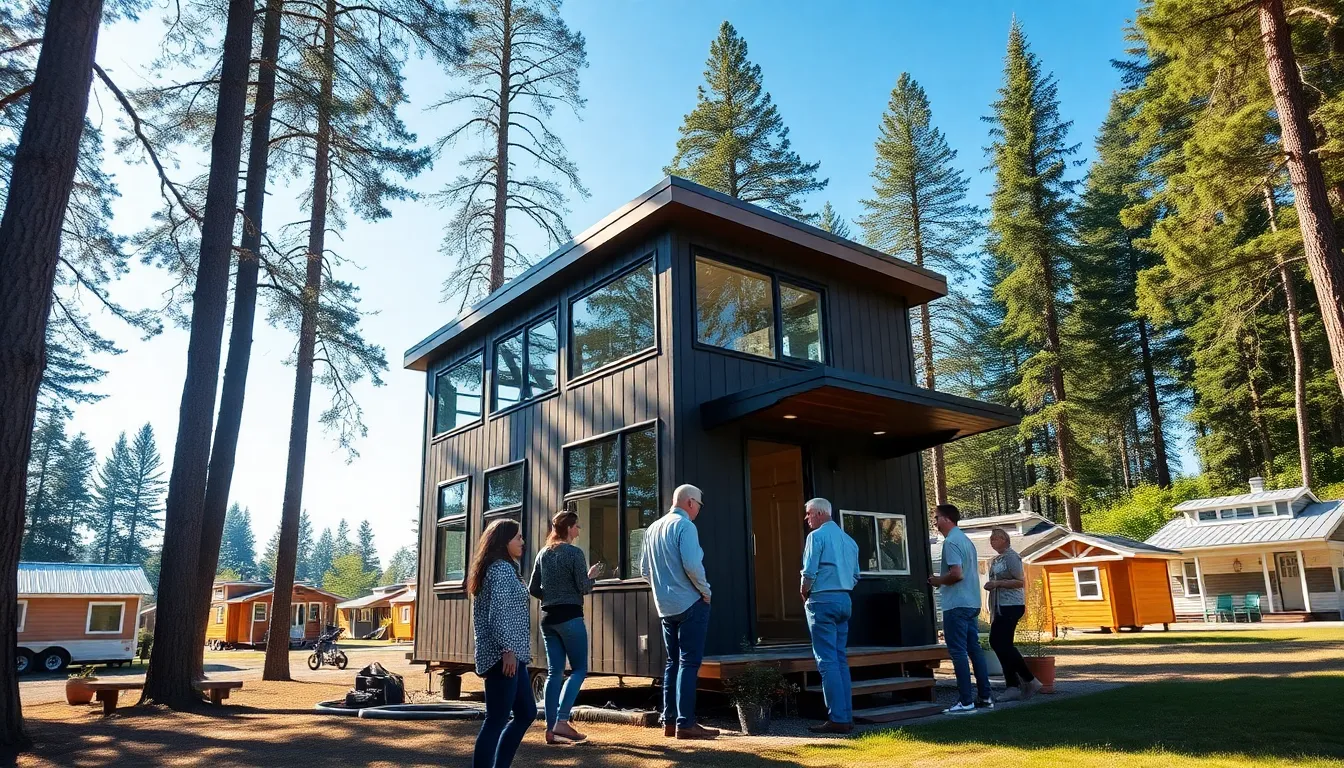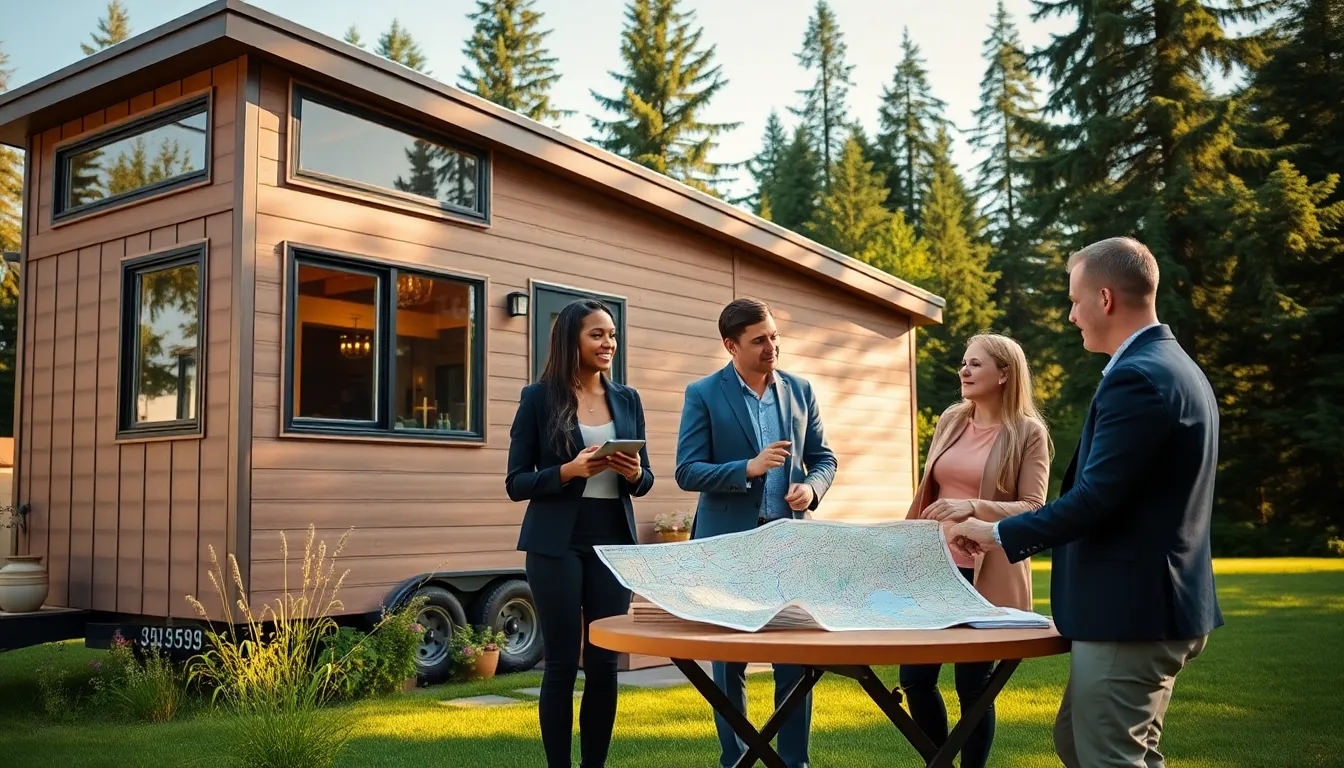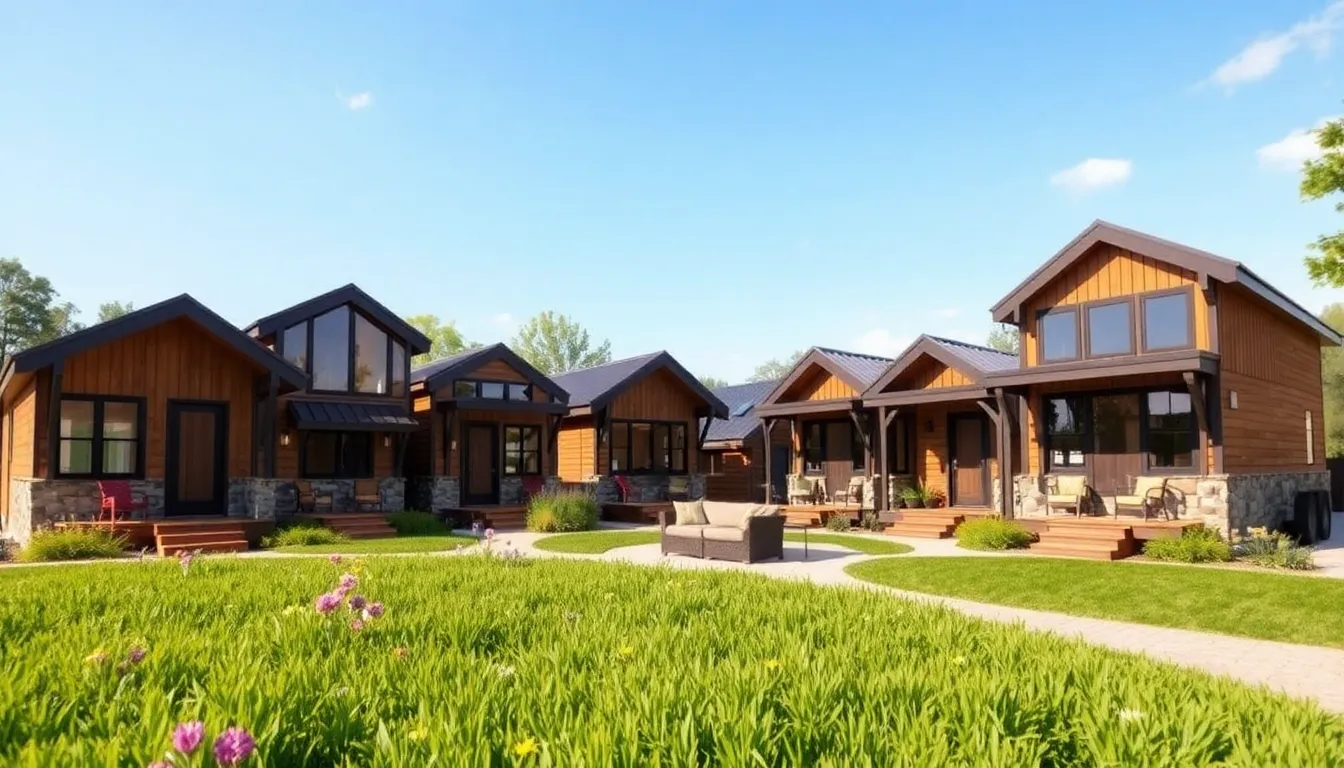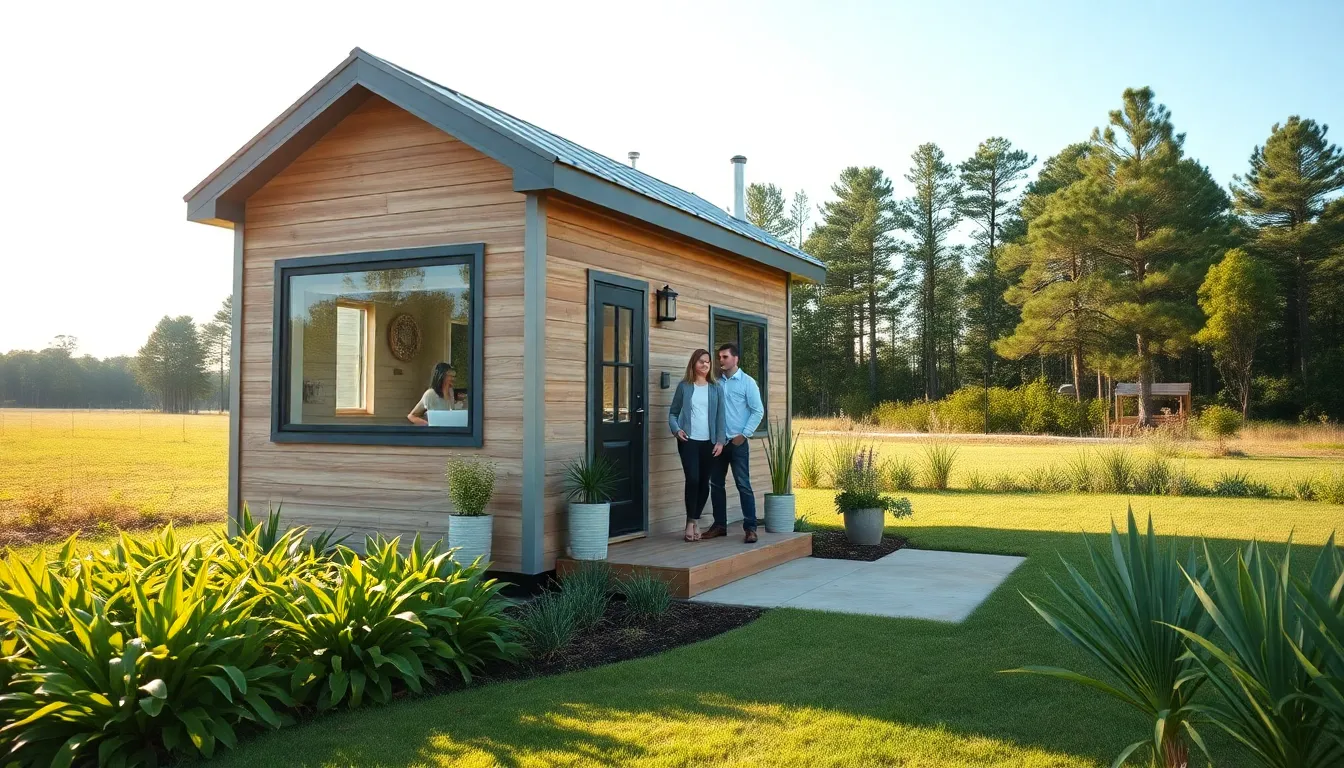Ever thought about living smaller and saving bigger? Tiny homes are all the rage in Washington, offering a quirky blend of functionality and affordability. Imagine reducing your carbon footprint while maximizing your creativity, because who needs 2,500 square feet when you can have one cozy nook that sparks joy? In this guide, we’ll jump into the allure of tiny living in the Evergreen State, exploring the many benefits, popular locations, and key insights that make this lifestyle choice not just trendy but practical. Buckle up as we navigate the exciting world of tiny homes.
Table of Contents
ToggleOverview Of Tiny Homes

Tiny homes are efficiently designed living spaces, typically ranging from 100 to 400 square feet. They challenge conventional notions of housing, providing a minimalist lifestyle that appeals to diverse demographics, from young professionals to retirees. In Washington, this movement has gained traction, fueled by a strong sustainability ethos and a desire for financial freedom. Not only do these homes usually come with lower utility costs, but they also host innovative design structures that maximize every square inch. Whether nestled in the woods or parked in a vibrant community, tiny homes offer a unique way to enjoy life’s pleasures without the clutter.
Tiny Home Types
Tiny homes come in various styles, including:
- Park Model Tiny Homes: Built on a trailer, these units are portable yet spacious.
- Container Homes: Crafted from shipping containers, they’re durable and eco-friendly.
- Mobile Tiny Homes: Some choose to live in tiny homes on wheels, embracing freedom and flexibility.
With so many options available, future homeowners can select a style that fits their personality and lifestyle.
Benefits Of Living In A Tiny Home
Living in a tiny home offers numerous advantages that can significantly enhance quality of life. For starters, decreased living space translates to lower costs. Maintenance, heating, and cooling expenses are reduced, allowing residents to allocate their savings towards experiences rather than unnecessary material possessions.
Also, tiny homes promote a minimalist lifestyle, which can lead to less stress. With fewer items to manage, inhabitants often find greater peace of mind. And let’s not forget the environmental benefits, many tiny homes are designed with sustainability in mind, utilizing eco-friendly materials and renewable energy sources.
Also, tiny home living fosters a closer connection to nature. Many tiny homes are situated in picturesque locations that allow for beautiful views and outdoor adventures just a step outside the door.
Popular Locations For Tiny Homes In Washington
Washington boasts a variety of enticing locations ideal for tiny home living. Here are a few hotspots:
1. Seattle
Ever dynamic, Seattle offers urban tiny home communities where residents can embrace city life with a tiny twist. Many developments focus on eco-friendly living, making it a perfect fit for those prioritizing sustainability.
2. Spokane
In the heart of Eastern Washington, Spokane provides a blend of urban convenience with scenic parks and outdoor recreation, making it a wonderful backdrop for tiny homes.
3. Olympia
Known for its rich history and vibrant arts scene, Olympia sparks creativity in tiny living. Residents enjoy local markets and a tight-knit community, enhancing the coziness of tiny home life.
4. Vashon Island
For those seeking peace and tranquility, Vashon Island perfectly marries nature with culture. Tiny homes here often feature stunning views and an immersive natural environment.
Key Features To Look For When Buying A Tiny Home
When eyeing tiny homes for sale, buyers should consider several key features:
Durability
Look for sturdy construction materials. Many tiny homes are built to be mobile or resistant to various weather conditions.
Space Efficiency
A well-designed tiny home maximizes space with clever storage solutions and multi-functional furniture. Built-in shelves, foldable tables, and lofted beds can make all the difference.
Utilities
Make sure the home is equipped with essential utilities like plumbing, electricity, and heating. Some might opt for solar panels or composting toilets for sustainability.
Community Amenities
If you’re looking at tiny home communities, take note of the amenities available. Proximity to parks, recreational areas, and communal facilities can enhance the living experience.
Financing Options For Tiny Home Purchases
Financing a tiny home can differ significantly from traditional home purchases. Here are some accessible options to consider:
Personal Loans
Many choose personal loans for financing, as these can cover the majority of costs without requiring a large down payment. This option can work well for those purchasing a portable tiny home.
Specialty Lenders
Some financial institutions specifically cater to tiny home buyers. These lenders understand the unique market and can offer tailored financing solutions.
FHA Loans
For those investing in permanent tiny homes on foundations, applying for an FHA loan can open up more favorable terms, just like traditional home financing.
Resources For Tiny Home Buyers In Washington
Navigating the world of tiny homes requires understanding local regulations and available resources. Here are several helpful resources for potential buyers:
Tiny Home Associations
Organizations like the Tiny Home Industry Association provide insights into best practices, zoning laws, and community networking.
Local Real Estate Agents
Connecting with agents who specialize in tiny homes can give buyers an edge. These experts are familiar with zoning regulations and can find the best listings.
Online Marketplaces
Websites like Tiny House Listings and Zillow have sections dedicated to tiny homes. They make browsing for options easier and often provide detailed descriptions and photos.







